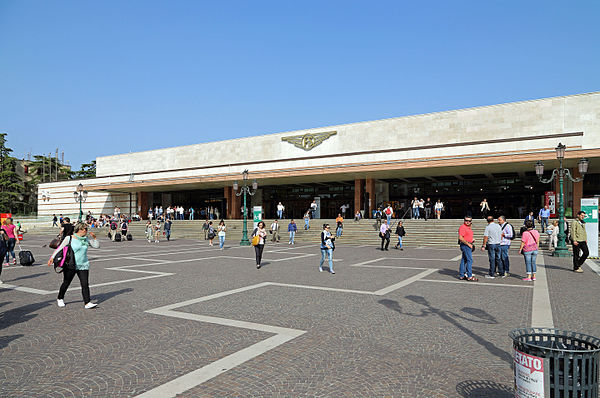Trekking the Train System
- Madison "Sonni" Hendrickson
- Jul 3, 2018
- 4 min read
So, you've decided to take a trip to Venice. Great! Here is what you need to know about getting there by train.
Venice is a tourist hotspot, obviously. So, this makes it easy to get where you want to go. I came from a small town called Urbino – about 4 hours away – so I took a train. There is also a local airport with bus service that transports to and from the city.
Here is my advice on how to get to Venice by train:
Book your tickets online at least a few days before you plan on visiting.
The earlier you book your tickets the cheaper they will be and the more options you will have. I use an app called “Trainline EU,” but you can also use their online website or other booking websites. I booked my tickets 5 days before I planned to leave, and I spent €44.60 round trip.
The distance from Venice and where you are coming from will also factor into the price and length of your train ride.
It is possible to buy your tickets the day of at the train station, but they will be more expensive than if you book ahead.
There are several factors that go into finding the right ticket.
Departure time
Looking for train tickets is very similar to booking a flight. You enter in your departure and return date, departure time and arrival time. You hit the search button and are presented with many different options.
The nice thing about “Trainline EU” is it will show you the cheapest tickets for your specifications, which makes booking very easy for me. Less money spent on a train ticket means more money to spend on gelato.
If you use Trainline EU, you will first find and book your departing ticket and once you’ve locked that down the website (or app) will take you to book your returning ticket
First class vs. Second class
Just like flights there are various prices and quality of seats to choose from.
I always buy second class tickets. They are cheaper and the seats are generally really nice. However, seating does vary depending on the train. Different train companies will have different layouts and accommodations. Trenitalia is one of the most common companies. I was on their trains for this trip and they were very nice. Comfortable seats, air conditioning, outlets to charge electronics, and a shade for the windows.
Disclaimer about outlets:
Italy has different plugs than the U.S., so you'll want to be sure you have a converter.
For second class tickets, you may or may not get an assigned seat depending on the train. I visited Florence a few weeks ago and I had an assigned seat then, but this trip I didn’t have an assigned seat either way. I would imagine that first class tickets typically have assigned seating.
Transfers
When purchasing your ticket it will tell you how many transfers there are. Transfers can add to your total travel time, but you can work around them.
I have seen that the average transfer number is one, so you take a total of two trains. The more transfers you have the cheaper the ticket, but you have to account for the added travel time. My train ride was roughly 4 hours long, but total travel time was around 5 hours due to the 55-minute transfer time.
Knowing when to get off
Being in a foreign country where you don't speak the language can be a little stressful. However the announcements on the train are repeated in English so you'll be sure to know which stop is coming up and when you need to get off.
Navigating the Venice train station
Venice’s main train station is “Venice Santa Lucia” which is where I recommend coming into. It is an easy spot to get back to, and a place where almost anyone can give you directions to
The signs inside the train station are very intuitive. They are in large Italian text with English in smaller font directly under the Italian word. These signs direct you to other platforms, bathrooms, police, and the exits.
There are many shops and a few cafés where you can stop to buy clothing, shoes, bags, accessories, souvenirs, or refreshments.
BEWARE: At almost all cafés in Italy there is “counter service” and “table service”.
Counter service is what I personally recommend. You can look at the menu or the foods on display, walk up to the cash register, order, and take your food to go. If you choose this method food and drinks are €1 to €1.50 cheaper but you cannot sit down at the tables in the café.
Some cafés will have a sort of “standing table” with no chairs that you can eat at, but if you want to sit down you’ll have to find somewhere else.
Table service is exactly what it sounds like. You seat yourself, a waiter or waitress will come and take your order, bring your food out to you, and you can sit at the tables. This method is a little more expensive, but you can sit down, enjoy your food, and rest.
There is virtually nowhere to sit down in a chair in the train stations.
You might be lucky and find a bench you can sit at, but those are sparse. The best bet you’ll have to sit down is on the floor.
Now that you're equipped with all the information you need about taking the train, set off and see the city! Arrivederci!








Comments